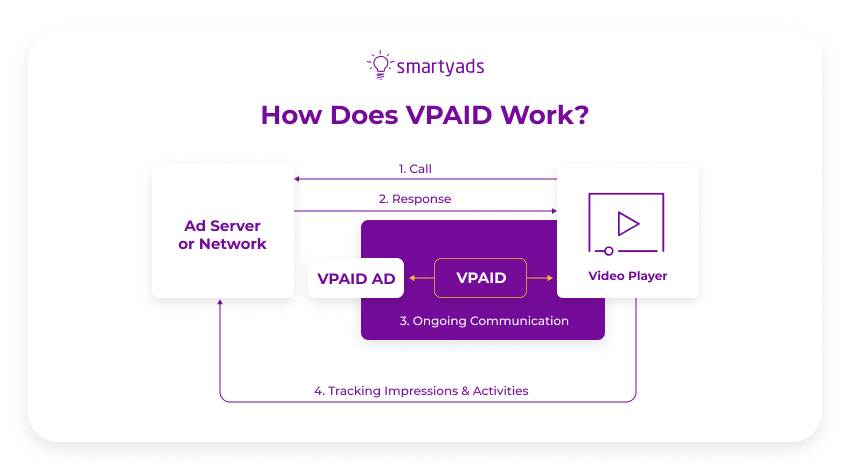Unlocking the Power of VPAID in Digital Advertising
What is VPAID?
Video Player Ad Interface Definition (VPAID) is a technical standard that enables interactive video ads to communicate with video players. It allows advertisers to create rich, engaging ad experiences while providing publishers with better control over ad delivery.
Why VPAID Matters in Digital Advertising
VPAID has revolutionized video advertising by enabling features like interactivity, measurement, and dynamic ad delivery. It bridges the gap between advertisers, publishers, and users, ensuring a seamless and engaging ad experience.
How VPAID Works: A Technical Overview
The Role of VPAID in Ad Delivery
VPAID acts as a bridge between video ads and video players. It uses JavaScript to facilitate communication, allowing ads to load, play, and interact with users directly within the player.
Key Features of VPAID
VPAID supports interactive elements like clickable buttons, surveys, and games. It also enables real-time tracking of metrics such as impressions, completions, and user interactions, providing valuable data for advertisers and publishers.
Benefits of Using VPAID for Advertisers and Publishers
Enhanced Ad Interactivity and Engagement
VPAID allows advertisers to create immersive ad experiences that capture user attention. Features like clickable overlays and interactive elements drive higher engagement and better campaign performance.
Improved Measurement and Analytics
With VPAID, advertisers can track detailed metrics such as viewability, completion rates, and user interactions. This data helps optimize campaigns and maximize ROI.
Seamless Integration with Video Players
Publishers benefit from VPAID’s compatibility with most video players, ensuring smooth ad delivery without disrupting user experience. It also supports programmatic advertising, enabling automated ad buying and selling.
Challenges and Limitations of VPAID
Complex Implementation and Compatibility Issues
While VPAID offers numerous benefits, its implementation can be technically challenging. Compatibility issues with certain video players and devices may also arise, requiring additional resources to resolve.
User Experience Concerns
Poorly designed VPAID ads can be intrusive or disruptive, leading to negative user experiences. Advertisers must strike a balance between interactivity and user-friendliness to avoid alienating their audience.
VPAID vs. VAST: Understanding the Difference
What is VAST?
Video Ad Serving Template (VAST) is another standard used for delivering video ads. Unlike VPAID, VAST focuses on linear video ads without interactivity.
Key Differences Between VPAID and VAST
While VAST is ideal for simple, non-interactive ads, VPAID supports advanced features like interactivity and real-time tracking. However, VPAID’s complexity makes it less suitable for all use cases compared to VAST.
The Future of VPAID in Digital Advertising
The Rise of VPAID 2.0
VPAID 2.0 addresses many limitations of the original standard, offering improved performance, better compatibility, and enhanced security. It is becoming the preferred choice for modern video advertising.
How VPAID Fits into the Programmatic Ecosystem
As programmatic advertising continues to grow, VPAID plays a crucial role in enabling dynamic, data-driven ad experiences. Its integration with demand-side platforms (DSPs) and supply-side platforms (SSPs) ensures efficient ad delivery and monetization.
Best Practices for Using VPAID
Designing User-Friendly Interactive Ads
Focus on creating ads that enhance user experience rather than disrupt it. Use interactive elements sparingly and ensure they add value to the viewer.
Ensuring Compatibility Across Devices
Test VPAID ads across different devices, browsers, and video players to ensure seamless performance. Address compatibility issues proactively to avoid delivery problems.
Leveraging Data for Optimization
Use the analytics provided by VPAID to refine your ad strategy. Monitor metrics like completion rates and user interactions to identify areas for improvement.
Conclusion: Why VPAID is a Game-Changer in Video Advertising
The Power of Interactive Video Ads
VPAID has transformed video advertising by enabling interactive, measurable, and engaging ad experiences. Its ability to connect advertisers, publishers, and users makes it an essential tool in the digital advertising toolkit.
Start Leveraging VPAID Today
Whether you’re an advertiser or publisher, understanding and implementing VPAID can unlock new opportunities for growth. Embrace this powerful standard to stay ahead in the competitive world of video advertising.

